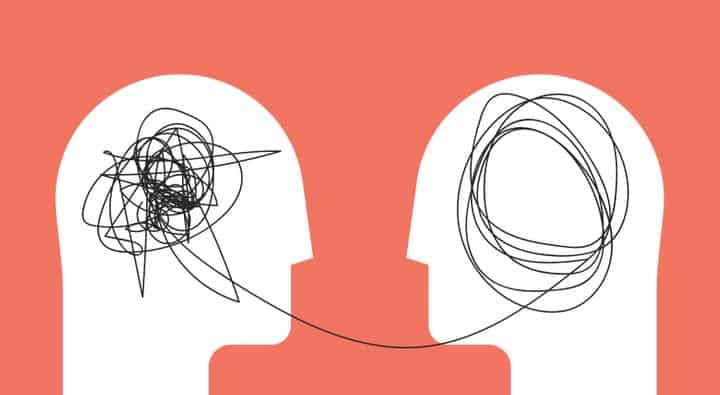What is EMDR Therapy and What Does It Work to Treat?
Developed in the late 1980’s, Eye Movement Desensitization and Reprocessing therapy is a distinct form of psychotherapy that aims to help individuals overcome the trauma and distress caused by past traumatic experiences. Today, it’s mainly used for individuals suffering from PTSD however it has also shown promise for people suffering from depression, anxiety, and panic disorders. Because EMDR doesn’t involve the use of medications, a large portion of individuals suffering from mental health conditions and disorders prefer it over methods of treatment with various side effects and risks for adverse reactions. And thus, even with its limitations, EMDR has become a prominent psychotherapy alternative to medicated treatment.
What is EMDR?
Eye movement desensitization and reprocessing is a method of psychotherapy that aims to reprocess traumatic experience and reduce the unpleasant feelings and emotions associated with them. The process was first introduced in 1987 by Francine Shapiro in order to treat post-traumatic stress disorder. Today, EMDR has also been found to be effective in the treatment of various other mental health conditions like depression, anxiety, and panic disorders, especially when the condition can be traced back to a specific memory or experience. Presently, there are about 60,000 clinicians with a formal training to administer EMDR, and these numbers are constantly growing. And despite there being a wide array of psychotherapies being used in the treatment of various conditions, EMDR has been dubbed one of the most effective choices for anxiety and related conditions. Some publications have gone as far as calling it a ‘miracle treatment’ that has revolutionized the way we understand trauma.
How Is EMDR Administered?
EMDR is a standardized treatment, which means it follows a specific, predetermined pattern to ensure the best results. That said, all patients – regardless of their history and condition – should expect to go through similar phases throughout the EMDR treatment process.
- History Taking – As with any other treatment, EMDR starts off with an in-depth discussion of history. What events do you think triggered your trauma, anxiety, or depression? When did the symptoms start? What specific stimulation triggers a trauma response? How do you feel when these memories are brought back to the surface?
These questions will help your therapist map out your psychology and determine the extent of the trauma, and the specific adjustments they need to make to your treatment plan to match your needs.
- Preparation – During the EMDR treatment process, you will be asked to maintain your attention and focus on the events that caused your trauma. This means you might be put in a situation that evokes the negative emotions and reactions that are triggered by your past trauma.
To prepare for these instances, your therapist will provide you a few techniques you can use to calm down if the negative feelings start to become overwhelming. These can include anything from breathing techniques to mindfulness.
- Assessment – This is where the process starts to get a little technical. Through your history,your therapist will figure out which thoughts and memories need to be targeted. During the time, the specialist will also pinpoint associated components.
As your trauma is brought to the surface, you manifest certain physical reactions that your therapist can observe. These physical sensations and manifestations – called ‘associated components’ – are then used to determine the ideal techniques to be used later on.
- Treatment – The actual start of the EMDR treatment begins with your therapist asking you to focus on a target memory. You will be required to maintain your attention on the negative thought, image, or experience while performing simultaneous eye movements.
In some cases, your therapist might also administer external stimulation like tapping, or they might ask you to perform specific movements while you move your eyes. Every individual requires unique treatment specifics, so some people might require more or less movement depending on the severity of their traumatic experience. If during the treatment process, you experience negative reactions that are too significant to handle, your therapist should help you refocus your mind on the present. This is also when the coping mechanisms you learned will come into play.
- Evaluation – This final phase occurs at the end of every session. Your therapist will ask you how you felt, and whether you’ve experienced any improvement throughout the treatment. With time, repeat EMDR treatments should help diminish the strong feelings associated with past trauma.
How Does EMDR Work?
Most methods of treatment for mental illness focus on communication (such as counseling or behavioral therapy) to unearth and resolve past traumas. In more severe cases, treatments may be centered on the use of medication. And this is what makes EMDR particularly peculiar. Using movements of the eyes – and at times, of the limbs – the method aims to resolve mental health issues without talk or medication. And while it’s not entirely clear how it does that, there’s a body of research that aims to explain how it works.
First off, the brain undergoes major functional and anatomical changes after a significant traumatic experience. When a person is placed in a situation that triggers significant panic, fear, anxiety, and stress, the brain shuts off higher functions and focuses on the flight or fight response. So throughout the duration of the experience, the individual is left to function with only the base propensities at work. The result is the formation of implicit memories. Also called ‘automatic memory’, this function lets you remember things without thinking about them – like riding a bike. In effect, anything that triggers the memory of a traumatic experience will result to the same automatic response that the individual felt at the time of the event. This is why individuals will often relive the same emotions, feelings, and reactions every time they’re reminded of their traumatic memory.
Another reason why these traumatic memories can be especially hard to cope with is because when the brain shuts off higher functioning centers, the individual will not form a solid memory of the exact events as they happened. This becomes a huge blockage in the process of attempting to make sense of the experience and process its effects. The eye movements performed during EMDR work to restructure neural pathways and assist the brain in reprocessing available information. By focusing on the traumatic experience while your eyes are stimulated into bilateral movement, the treatment helps to weaken the strong, negative emotions associated with the memory. What’s more, these eye movements have also been found to help the brain bypass areas of the mind that have been blocked due to trauma. In effect, the individual gets a more holistic, more complete view of their traumatic experience, giving them more material to work with so they can process the event and fully understand what happened.
What Can EMDR Treat?
Eye movement desensitization and reprocessing is often used in situations where an individual might be dealing with significant anxiety, stress, or fear, especially those associated with a specific memory. But therapists and experts have found that EMDR may be an effective treatment for a variety of mental health conditions, including:
- Anxiety
- Panic disorder
- Post traumatic stress disorder
- Depression
- Eating disorders
- Substance use disorders
According to studies, up to 90% of individuals suffering from single-trauma who underwent EMDR completely recovered after just three 90-minute sessions. Other studies claim that up to 100% of single-trauma victims and 77% of multiple trauma victims were free of their PTSD diagnoses after just six 50-minute sessions. That said, it’s important to recognize that EMDR does have limitations in that it might not be as effective for individuals suffering from multiple traumas. Because the therapy requires that individuals focus on each single traumatic experience to properly resolve and reprocess the information, those who struggle with various traumas can find it difficult to concentrate on just a single event, especially if the different occurrences tie in together.
A Promising Solution to Trauma
With a close resemblance to the mystical characteristics of hypnosis, EMDR has raised quite a few eyebrows through the years. But its impressive effects and astounding outcomes have solidified its place as a forerunner among various other pscyhotherapies that aim to resolve traumatic experiences and the mental health conditions associated with them. Although EMDR has a long way to go in terms of establishing the specifics of how it works, the present body of knowledge surrounding the treatment process make it a worthy choice for individuals who want to experience freedom from trauma without medication.





